Sea wildlife: Blue whales return home in Indian Ocean after 50 years
- Published
- comments
Watch: Drone footage captured by the Oceanic Films documentary team shows a blue whale in the Seychelles
Blue whales have been spotted making their home in a part of the Indian Ocean where they were wiped out decades ago.
Researchers and filmmakers in the Seychelles captured footage of the animals in 2020 and 2021 and a year of underwater audio recording also revealed the animals were spending months in the region, which means they could be breeding there.
The researchers involved in the mission described this amazing discovery a "conservation win".
"This is the largest animal to ever exist on the planet," lead researcher Dr Kate Stafford said, adding: "We want to know where they are coming back and knowing there's a population around the Seychelles is incredibly exciting."
Why did blue whales die out in this part of the world?
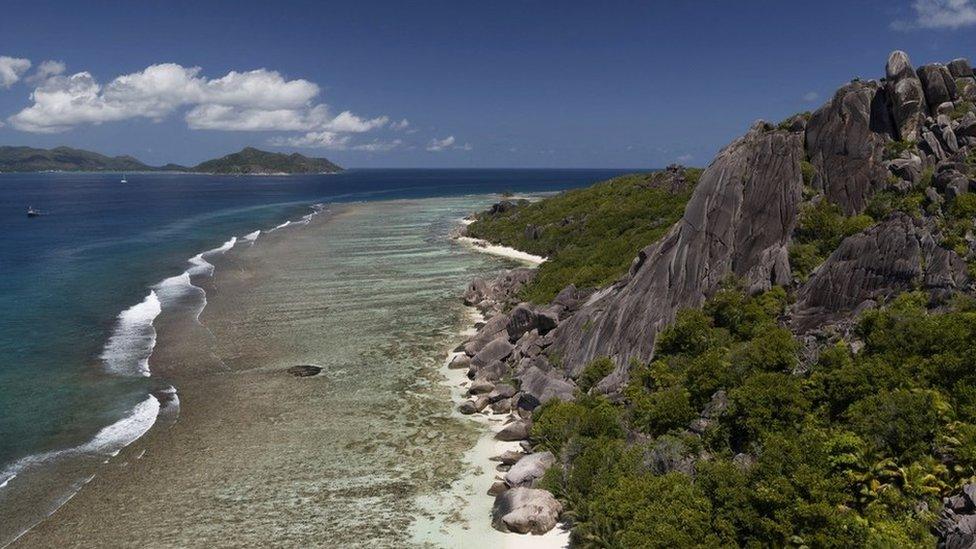
The Seychelles government has made a commitment to protect 30% of its national waters
To get an idea of just how big blue whales are, imagine the length of three school buses back to back.
They can grow to over 33 metres (around 100ft) in length, which is over twice as long as a T.rex dinosaur.
Because of their large size and supply of blubber - a thick layer of fat under their skin - blue whales were a popular species to hunt.
The Seychelles is an large collection of 115 islands off East Africa. and is home to many animals, beaches, coral reefs and nature reserves.
Conservation scientists are keen to understand exactly how important the Seychelles is for blue whales.
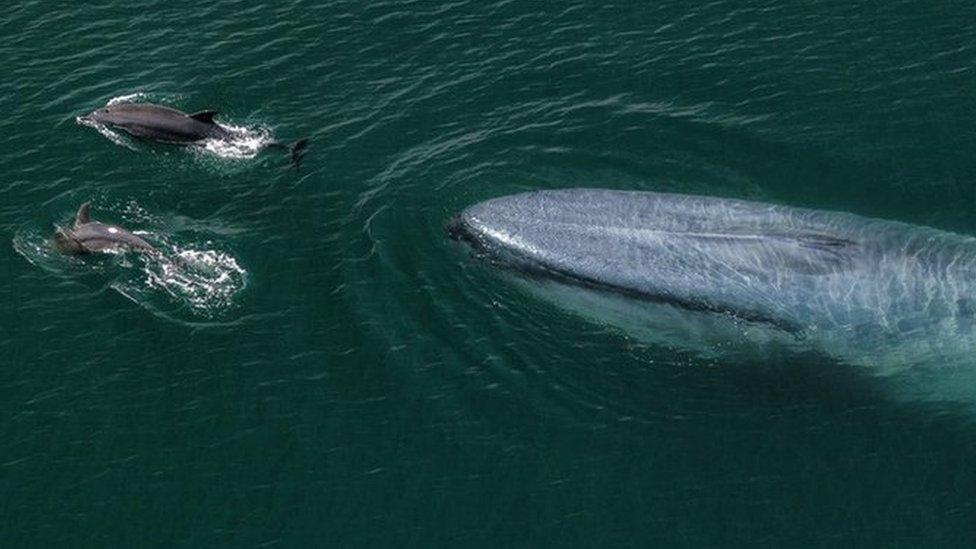
Blue whales are the largest animals on Earth and can reach around 98ft (30m) in length
Whalers would sell their blubber and body parts to suppliers who used it to make things like lamp oil, soap, perfume, candles, and cosmetics.
In the 1960s whaling ships from Russia, almost completely destroyed the whale population here.
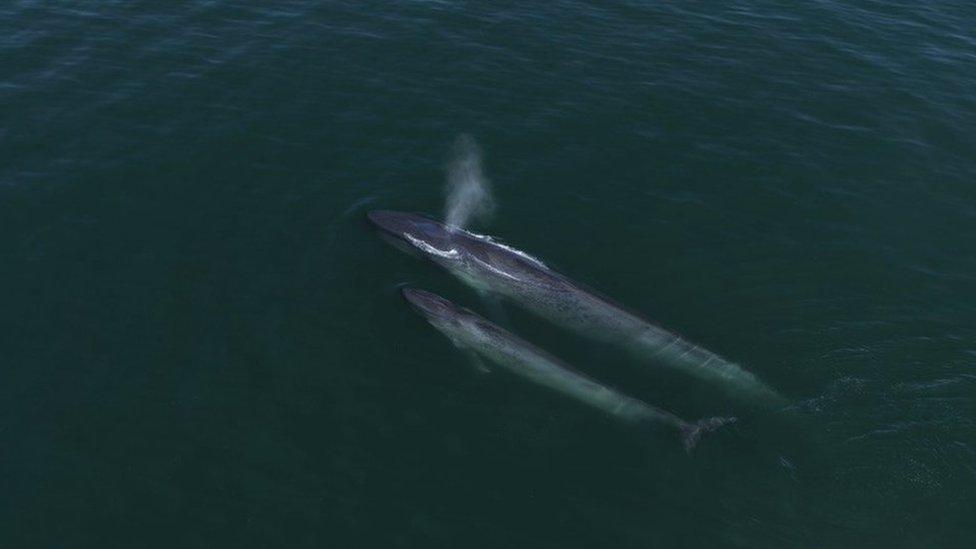
Scientists think blue whales may breed in the waters around the Seychelles
Blue whales are found in all oceans except the Arctic.
While these new arrivals are good news, blue whale numbers are still a tiny fraction of what they were, and the species is listed as endangered by the International Union for the Conservation of Nature.
Although there are thought to be no more than 25,000 living in the world today, some countries have reported an 'astonishing' rise in blue whale numbers and populations are increasing globally.
How did the team of researchers track blue whales ?

Divers fixed the sound trap to the seabed at a depth of about 79ft (24m)
The team fixed a 'sound trap' fitted with underwater microphones, batteries and recording devices, to the seabed.
It was then left in place for a year, recording 15 minutes of every hour, every day.
After scientists retrieved their sound trap, study of the recording revealed blue whales were there and communicating.
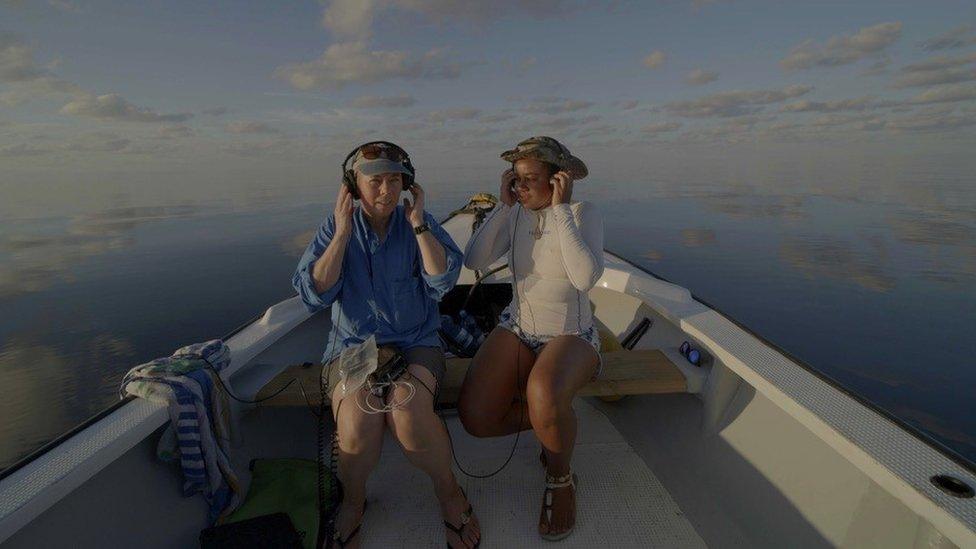
Kate Stafford (left) and her colleagues spent hours each day listening for the calls of blue whales
The mammals' signature, very low frequency song could be heard most often during March and April.
The song or fundamental frequency of the blue whale is so deep and such a low frequency that it is beyond the range of human hearing.
"This means the Seychelles could be really important for blue whales," said Dr Stafford, explaining: "They sing during the breeding season and we think it's probably the males who are singing, based on what we know about other whales.
"So there's also potential that the Seychelles is a breeding area or a nursery area."
- Published4 January 2021
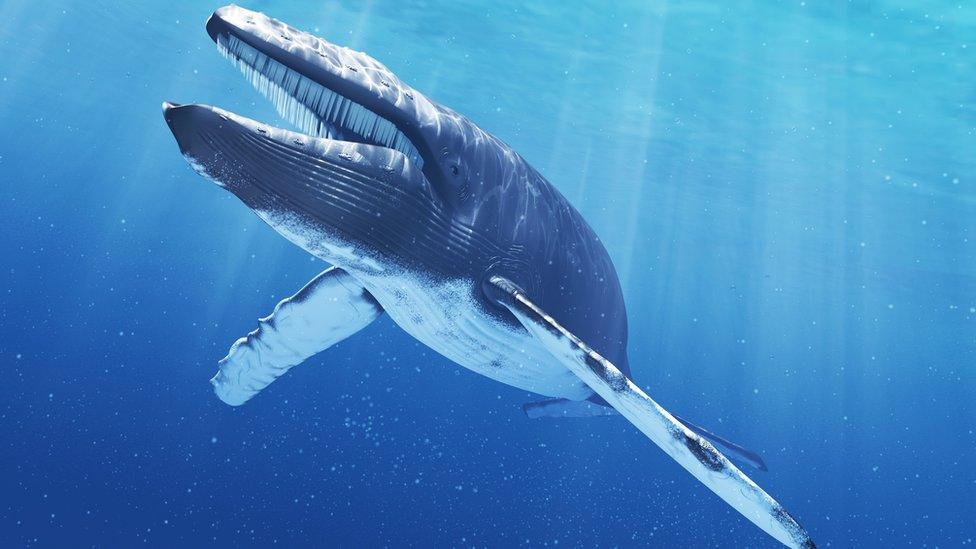
- Published17 February 2022
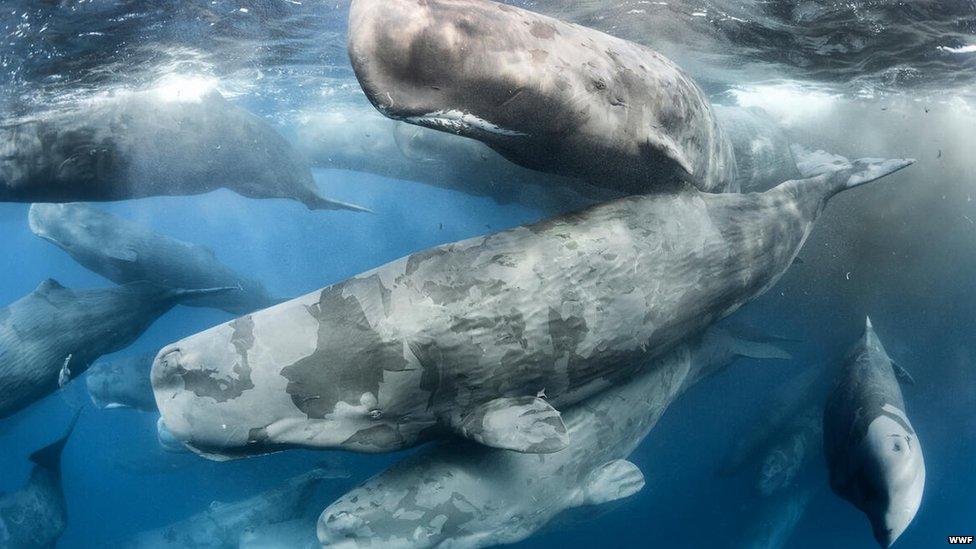
- Published16 October 2019

